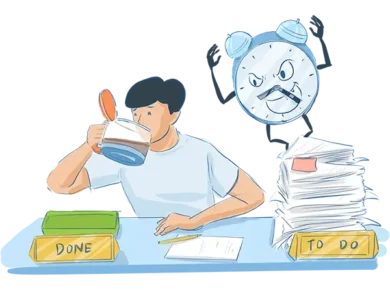No matter how innovative and skilled your team members are, without efficient communication, they are adrift. It can result in a low output even if your business has all of the pieces necessary to become a powerhouse.
If you have already ironed out potential issues, lack of or poor communication may be the culprit behind your unmotivated team. Even employees with the best intentions will not be able to get the work done if they think their voice is unheard in the workplace.
Key Elements of An Efficient Communication Strategy
Before planning an effective communication strategy, you should iron out the following key elements:
- The message you want to communicate.
- The people you want to communicate with.
- The reasons why you need to communicate with them.
- When you want to communicate.
The answers to these questions will help you come up with a focused strategy along with the purpose and meaning behind your message.
Here are some ways you can come up with accurate answers.
#1 – Define Your Approach
The first thing you need to do is define the principles that will work behind your communication approach with your team members. Besides using authentic and meaningful words, maintain a feedback loop as well so that they are encouraged to start a dialogue.
For example, you can conduct regular weekly meetings regarding ongoing projects on a specific day and time. That way, you will be able to communicate your commitment to project progress and ensure team members remain within the loop at the same time. Regular meetings will also encourage them to come prepared with their own questions.
#2 – Just Listen
You don’t have to talk to communicate. Sometimes, listening silently is all the prompting your team members may need to share their thoughts and opinions with you. This may sound counterproductive but you will be surprised to learn how productive this strategy can be. Think about it. How can you expect to have a productive conversation with a team member if you refuse to listen to their opinions and take them on board?
So during your weekly team meetings, allow your team members to take the floor one by one rather than heading them yourself each time. Plus, do not cut them off halfway and explain their concept to them. It will only discourage them and the rest of the team members from speaking up in the future.
#3 – Meet With Employees outside The Workplace
Besides ensuring you conduct weekly work meetings to discuss a project, make sure you meet with team members outside the office as well. This will do two things – it will encourage them to open up and express what they really think and it will also allow them to see your casual side. Both benefits will work to your advantage. Employees who know your softer side are more likely to open up at work in front of you.
This strategy may not work if you have remote employees but you can still make such teams open up with video conference calls. Unlike phone calls, these can allow them to see your facial expressions and body language. Those non-verbal cues can help them understand what you are trying to communicate more clearly than if they only had your voice to go on.
#4 – Cover Avenues of Communication During Training Sessions
Yes, training sessions should focus on the job duties that each new employee is responsible for as well as company policies and its history. However, if they keep coming up to you every day asking about them, that means you did not communicate each item to them properly.
To prevent this, ensure new hires can communicate effectively with you from the get-go, train them in communication methods as well. This includes employees who have held jobs before.
Communication methods can differ from one business to the next. If their previous employers preferred face-to-face meetings but the method doesn’t agree with your management style, change it. Let them know they can send you their queries via email. That way you can save time and ensure employees remain on the right track at the same time.
#5 – Encourage an Open Environment
A rigid or unbending management style will do more to disrupt communication than anything else. To keep morale high and ensure your team can come to you without hesitation, keep communication channels open. Plus, you can do one better by recognizing team achievements publicly.
This will show your team that you care about their progress and how they are faring. The strategy will also boost productivity, which means you will have less to do as your employees take on tasks willingly.
To ensure this strategy succeeds, give clear instructions. Unclear instructions can derail a project and you may not realize it until it is too late. Prevent that from happening by ensuring critical project information is communicated via email or a project management tool or even video chat. Maintain an open-door policy so that they won’t hesitate to come up to you if they are facing issues at work or need advice. If you have remote team members, allow them to contact you via video chat or even WhatsApp if it means you can help them.
The format you choose should depend on what your team prefers collectively. That way, they can get things right the first time around, which will save time and projects. The strategy can also help you foster a positive work environment, which will end up reaping its own rewards in the long run.
#6 – Encourage Collaboration Between Departments
When networks are strong, communication strengthens. A distributed workforce that can work off each other’s strengths can ensure each project is completed well within deadlines. It also establishes a communication stream that can be used each time a new project comes down the pipeline. Strengthening this inherently can lead to better workplace communication, increase employee morale, and allow team members to see the business from other perspectives.
To establish this network, make sure your team members have contact details of all department heads and their team members who they have to collaborate with. Encourage them to keep their address books updated at all times to ensure streamlined communication.
#7 – Discourage Gossip and Fake Information
Gossip is common in the workplace, but malicious rumors can ruin a team member’s career. Effective communication can nip it in the bud as long as your team knows they have your ear. If your organization ignores such news, it is already on its way to failure as it overcomes employee morale.
The best way to address fake rumors is through a process that can professionally address them. Hold meetings with people who are spreading gossip to understand where it is coming from, who it is targeting and why. This will curb future incidents because your employees will know that guilty parties will be held accountable and that they are safe.
Dos and Don’ts for Effective Communication
To streamline communication and avoid miscommunication, keep these dos and don’ts in mind:
- Do use vocabulary that is easy to understand and can allow you to explain your stance. If your language is overly complex, your team members will keep returning for explanations. This will waste time and compromise deadlines.
- Don’t joke around too much. A light joke can ease the tension but consistent ones can demoralize your team, especially if the jokes are on their behalf. Your tone and your words should be professional at all times. This includes slang words that some employees may find offensive.
- Do keep the conversation light even if a project is in trouble or if deadlines are being compromised. Shouting or showing temper in any way will discourage your team members from reaching out to you in the future.
- Don’t repeat yourself unnecessarily. Your method of communication should be clear, firm, and authoritative the first time around. That way, you won’t have to repeat yourself and your team members will have more confidence in your abilities as a leader.
All of the aforementioned communication strategies and tips can help you keep your team on the same page in terms of projects and maintain their morale as well. As far as time-management skills go, these tips will prove productive in the long run.



